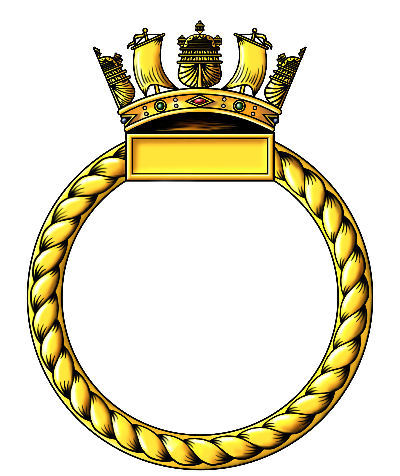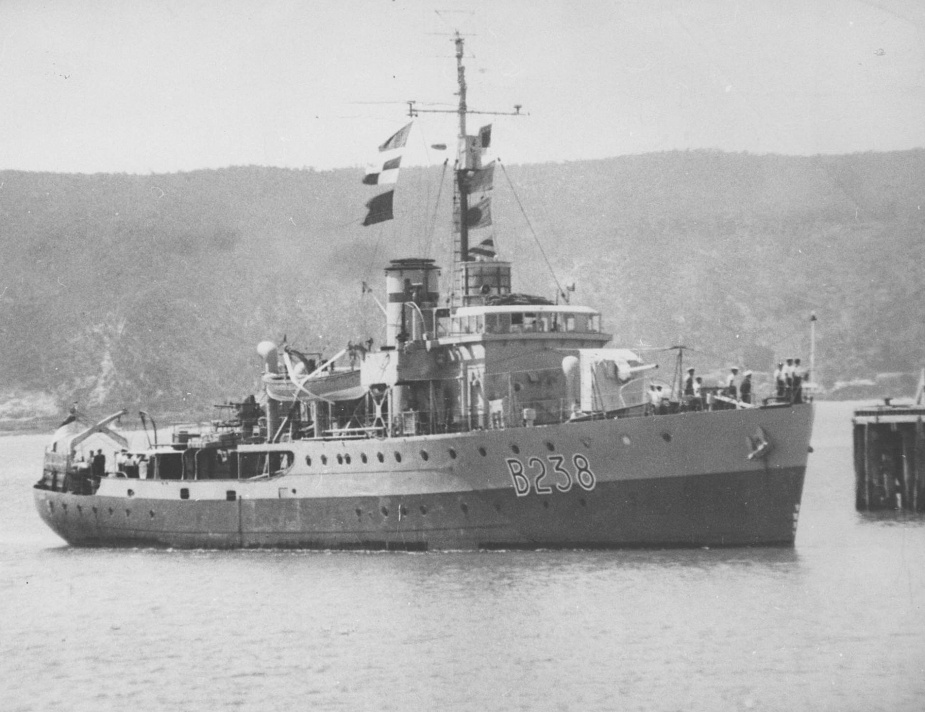Fleet Minesweeper

No badge issued for this vessel
Battle Honours
PACIFIC 1942-45
INDIAN OCEAN 1942–44
OKINAWA 1945
Specifications
Bathurst-class corvette
Builder: Morts Dock & Enginering Co. Ltd. Sydney, New South Wales, Australia
Displacement: 733 tons
Length: 186 ft
Beam: 31 ft
Draught: 8 ft 6 in
Propulsion: triple expansion engine, 2 shafts. 2,000 hp
Speed: 15 Knots
rmament: 1 12 Ponder, later1 × QF 4 inch Mk XIX gun, 3 × Oerlikon 20 mm cannons (later 4), 1 × Bofors 40 mm gun (installed later), 2 x.303 Vickers machine guns, 40 Depth charges (4 throwers and 2 chutes) Crew complement: 85
Commanding Officers
T/Lt. George Edward Gough, RANR(S) 5 Feb 1941
T/Lt. Terence Christie, RANR(S) 16 Jan 1942
T/Lt. Terence Christie, RANR(S) 14 Aug 1942
Lt.Cdr. Bernard Lucien Dechaineux, RANR 08 Jan 1944
Lt.Cdr. Edwin Max Andrewartha, RANR 13 Dec 1944 - Aug 1945
Related items
None
Reminiscences
None
Gallery
None
H.M.A.S. BURNIE
Read aloud

Early history
A Bathurst Class minesweeper ordered from Morts Dock Engineering Company, Balmain, Sydney, NSW, her keel was laid down at on June 4th 1940. The ship was launched on 25 October 1940 by Lady King, wife of the Chairman of Directors, Mort's Dock and Engineering Co. She was commissioned as H.M.A.S. BURNIE on April 15th 1941, the first RAN warship to carry the name of the Tasmanian port city. Her first commanding officer was Lieutenant George E Gough RANR(S)1.
Once operational BURNIE joined the 20th Minesweeping Flotilla on 10 May 1941 but was then temporarily based at Fremantle, Western Australia as a patrol ship and convoy escort, but was again reassigned and went to Sydney. In June BURNIE and sister ship GOULBURN were assigned to China Force2 at Singapore arriving on July 12th. There BURNIE and GOULBURN joined BENDIGO and MARYBOROUGH in the 21st Minesweeping Flotilla and they were employed to minesweeping, patrol and escort duties.
BURNIE in company with GOULBURN left Singapore on January 25th assigned to sweep the southern half of Banka Strait arriving in Batavia on January 30th. They moved to the less congested harbour of Tanjong Priok by February 2nd from where the two ships began a continuous anti-submarine patrol commencing on February 5th; BURNIE and her sister ships were now involved in a series of actions designed to delay the Japanese advance through Malaya and the Dutch East Indies. During this time she was engaged in anti-submarine patrols and troop and civilian evacuation and was also employed on demolition work, blowing up wharves, destroying oil and rubber stocks and military supplies using her gun and deploying landing parties - duties made extremely difficult by the constant Japanese air raids.
The withdrawal from Java began and on February 22nd and BALLARAT, BENDIGO, BURNIE and MARYBOROUGH switched to patrolling the Sunda Strait area. On March 1st the withdrawal from Batavia was ordered and all British ships were to gather at Tjilatjap for evacuation. That evening Commodore J.A. Collins RAN, Commodore Commanding China Force, arrived from Batavia and boarded BURNIE. When all ships available in the port had loaded as many evacuees as possible BURNIE flying the broad pennant of Commodore Collins departed at 8 p.m. on the 2nd the collection of ships reaching Fremantle on March 8th.
Allocated to the Eastern Fleet
In September 1942 BURNIE was assigned to the British Eastern Fleet for anti-submarine patrol and convoy escort duties in the Indian Ocean operating between Bombay, Aden and Colombo.
Allocated to the British Pacific Fleet
Section under construction
Post War history
On February 4th 1946 BENDIGO sailed from Melbourne for Sydney, in company with BALLARAT. Arriving in Sydney on February 6th, BENDIGO reduced to a Care and Maintenance basis. The ship paid off at Sydney on September 27th 1946. Since commissioning, she had steamed 151,242 miles.
Notes:
1 RANR(S) = Royal Australian Navy Reserve (Seagoing)
2 China Force, a RN-RAN cruiser and destroyer force force based in Batavia, Java in the Dutch East Indies
Last modified: 23 February 2023
Primary information sources
Additional sources:
Photo & history by John Lyall November 2009
Comments (0)